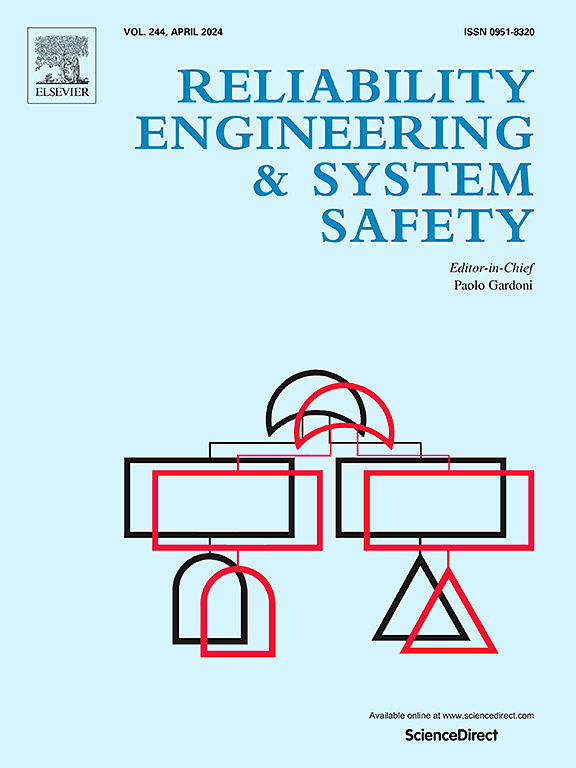Network analysis-enhanced project risk management for nuclear power plant construction
IF 9.4
1区 工程技术
Q1 ENGINEERING, INDUSTRIAL
引用次数: 0
Abstract
This paper introduces a comprehensive framework for managing interdependent delay risks in nuclear power plant (NPP) construction by integrating network theory and topological analysis. Spent fuel disposal, nuclear plant safety and nuclear weapons proliferation are known important concerns for nuclear power development, but costs remain the fundamental problem, as NPP projects are plagued by schedule delays that substantially increase total costs. Such complex megaprojects are exposed to numerous risks of different sources that behave interdependently. Most of the studies understand the risks of delay in NPP construction projects in isolation without taking interdependencies into account. The proposed methodology employs a Design Structure Matrix (DSM) to construct a Risk Interaction Network (RIN), enabling a topological assessment to identify critical risks that may cause cascading delays in project tasks. An algorithmic search for these critical risks is conducted, considering the impact of their removal on the RIN's characteristics. We define a bi-objective optimization problem aimed at generating a project schedule that minimizes both the project's makespan and the reachability density of the RIN. The solution is obtained using an evolutionary algorithm. Applied to a Double-Containment Pressurized Water Reactor (DC-PWR) project, this approach effectively uncovers risks neglected by classical analysis and offers scheduling options for different risk attitudes, enhancing decision-making capabilities.
网络分析增强的核电站建设项目风险管理
本文将网络理论与拓扑分析相结合,提出了核电厂建设中相互依赖延迟风险管理的综合框架。众所周知,乏燃料处理、核电站安全和核武器扩散是核电发展的重要问题,但成本仍然是根本问题,因为核电站项目受到进度延误的困扰,这大大增加了总成本。如此复杂的大型项目面临着各种不同来源的风险,这些风险相互依存。大多数研究都是孤立地理解核电站建设项目延迟的风险,而没有考虑到相互依赖性。提出的方法采用设计结构矩阵(DSM)来构建风险交互网络(RIN),使拓扑评估能够识别可能导致项目任务级联延迟的关键风险。对这些关键风险进行算法搜索,考虑到它们的移除对RIN特征的影响。我们定义了一个双目标优化问题,旨在生成一个项目时间表,使项目的最大完工时间和RIN的可达性密度最小化。采用进化算法求解。将该方法应用于某双壳压水堆(DC-PWR)项目,有效地揭示了经典分析所忽略的风险,并针对不同的风险态度提供了调度方案,提高了决策能力。
本文章由计算机程序翻译,如有差异,请以英文原文为准。
求助全文
约1分钟内获得全文
求助全文
来源期刊

Reliability Engineering & System Safety
管理科学-工程:工业
CiteScore
15.20
自引率
39.50%
发文量
621
审稿时长
67 days
期刊介绍:
Elsevier publishes Reliability Engineering & System Safety in association with the European Safety and Reliability Association and the Safety Engineering and Risk Analysis Division. The international journal is devoted to developing and applying methods to enhance the safety and reliability of complex technological systems, like nuclear power plants, chemical plants, hazardous waste facilities, space systems, offshore and maritime systems, transportation systems, constructed infrastructure, and manufacturing plants. The journal normally publishes only articles that involve the analysis of substantive problems related to the reliability of complex systems or present techniques and/or theoretical results that have a discernable relationship to the solution of such problems. An important aim is to balance academic material and practical applications.
 求助内容:
求助内容: 应助结果提醒方式:
应助结果提醒方式:


